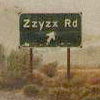I could not want to stand up and stretch any more, but I have a contented, purring, sleeping cat on my lap, and life doesn’t get any better than that.
My brief take on the Amazon patent for their Associates program: it doesn’t bother me in the slightest. For starters, they applied for the patent on June 27, 1997, which is a long time before the Internet commerce craze hit. They put time, programming skills, and money into developing the program, the first of its kind (so far as I know, and Business Wire 7/18/1996 agrees). And, most basically, they are entitled to protection for their innovations, just as drug companies are entitled to patents on their new medications.
I think that the furor over this patent is a function of the fact that it took 2+ years to grant the patent, during which similar systems have popped up at other websites. This doesn’t mean that those systems weren’t copied when the webmasters of those sites saw Amazon’s successful model; in fact, I suspect that’s exactly what happened.
I think I like Fred McPherson’s take on all this.
And as for the much-ballyhooed noamazon site, I find it lacking in truth. For example, on their explanation page, they try to draw parallels between the 1-Click patent and “taking a credit card order over the phone” — a very weak parallel. Instead, imagine an entire system whereby I could give a company my billing and shipping information ahead of time, and then I could just call them, type in an item number and my customer ID number, hang up, and expect my item to ship out for delivery. That’s the parallel to the 1-Click system.
For the linguists and Scrabble players out there, a truly comprehensive site to visit is A Collection of Word Oddities and Trivia. Where else can you find out which words have four, or even five, same letters in a row, or what the longest word with only one vowel is, or even what pneumonoultramicroscopicsilicovolcanoconiosis means?
That’s cool — because that’s such a long word, I decided to learn how to represent a soft hyphen in HTML, so that your browser will wrap it with hyphenation. (For reference, it’s “­” or “­”.) I just noticed that this doesn’t work in Netscape 4.X; it turns out that there’s a large historical discussion behind the soft hyphen. The long and short of it is that HTML 4.0 defines it the way that IE 5.X displays it — a discretionary hyphen, only visible when the browser wraps a line at it.
This makes me want to vomit. (Mental note to self: to stay calm and keep your food down, remember that anyone who says that their way is the only way is sheltered and needy of perspective.)
Quite possibly, the coolest 404 page I’ve seen. I may have to implement some o’ that myself…
Last month, Dubya spent $288 a minute, and all he got was the lousy South Carolina primary.



For starters, they applied for the patent on June 27, 1997, which is a long time before the Internet commerce craze hit. They put time, programming skills, and money into developing the program, the first of its kind (so far as I know, and Business Wire 7/18/1996 agrees).
Does this mean that Amazon’s affiliate program was published in Business Wire in 1996? If so, then how can they be granted a patent that was filed in 1997?
http://www4.law.cornell.edu/uscode/35/102.html
• Posted by: André Radke on Feb 26, 2000, 10:26 PMI can’t speak with any legal authority, of course, but the patent application seems to be legit according to the page you cited. The two passages that are relevant to your question read that the invention shall be entitled to a patent unless:
(a) the invention was known or used by others in this country, or patented or described in a printed publication in this or a foreign country, before the invention thereof by the applicant for patent
This states that the applicant can’t get a patent if the invention was described in print before the applicant claims that they invented it. (This is logical; you can’t patent something if there’s an article which proves that it had already been invented prior to the date that you claim to have invented it.) That’s not the case here; the Business Wire article explicitly describes it as an invention of Amazon’s.
(b) the invention was patented or described in a printed publication in this or a foreign country or in public use or on sale in this country, more than one year prior to the date of the application for patent in the United States
This states that the applicant can’t get a patent if the invention was described in print more than a year prior to the application for patent, even if it is in reference to the applicant as the inventor. (This seems, to me, to be like a statute of limitations on an invention — once it’s described in a public article, you’ve got a year to patent it or else you lose the patent.) Again, though, this is not the case here; the application was filed on 6/27/1997, and the article was printed on 7/18/1996, less than a year prior.
Again, I’m not a legal scholar by any means, but that’s how I read those two passages.
• Posted by: Jason Levine on Feb 26, 2000, 11:21 PM